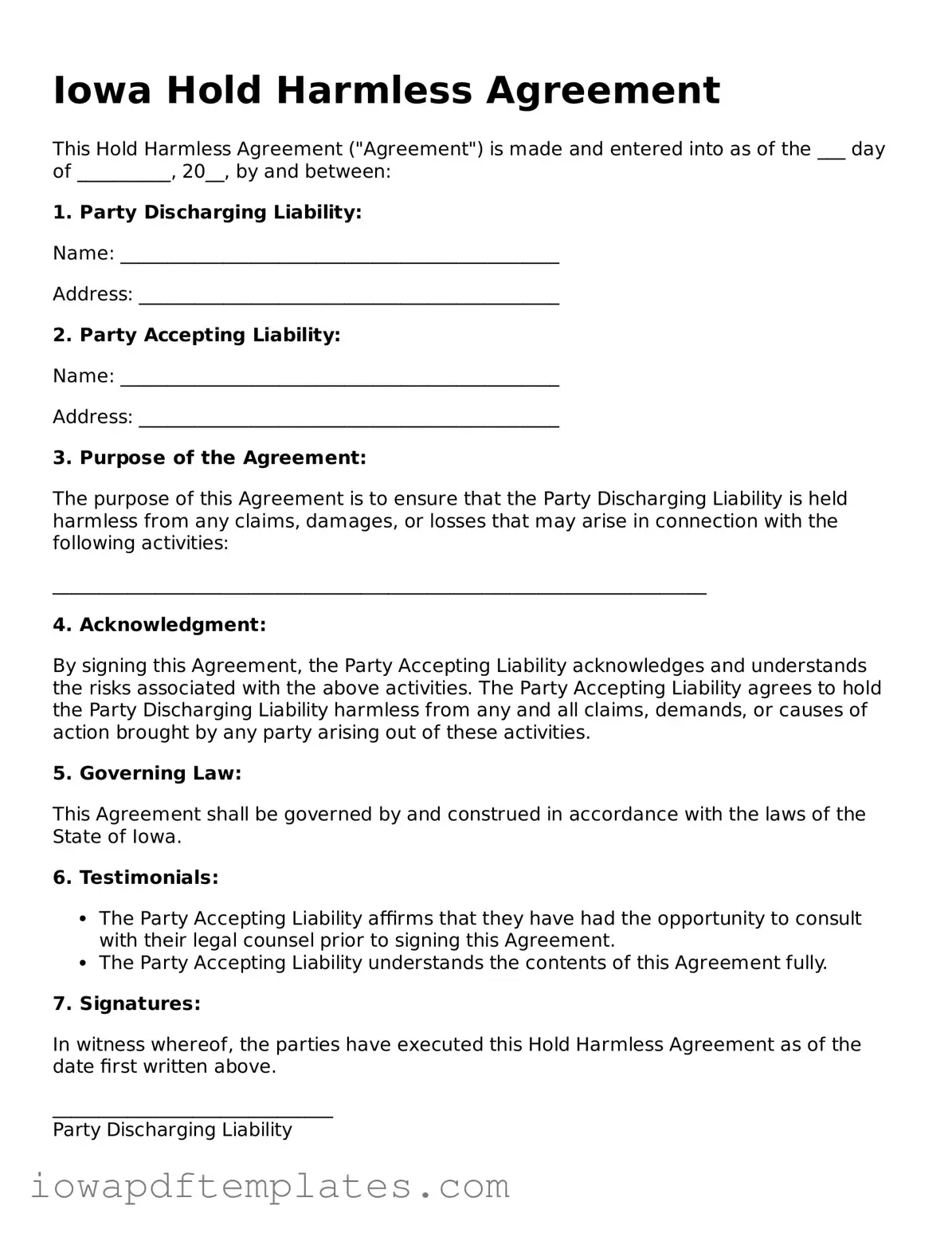Iowa Hold Harmless Agreement
This Hold Harmless Agreement ("Agreement") is made and entered into as of the ___ day of __________, 20__, by and between:
1. Party Discharging Liability:
Name: _______________________________________________
Address: _____________________________________________
2. Party Accepting Liability:
Name: _______________________________________________
Address: _____________________________________________
3. Purpose of the Agreement:
The purpose of this Agreement is to ensure that the Party Discharging Liability is held harmless from any claims, damages, or losses that may arise in connection with the following activities:
______________________________________________________________________
4. Acknowledgment:
By signing this Agreement, the Party Accepting Liability acknowledges and understands the risks associated with the above activities. The Party Accepting Liability agrees to hold the Party Discharging Liability harmless from any and all claims, demands, or causes of action brought by any party arising out of these activities.
5. Governing Law:
This Agreement shall be governed by and construed in accordance with the laws of the State of Iowa.
6. Testimonials:
- The Party Accepting Liability affirms that they have had the opportunity to consult with their legal counsel prior to signing this Agreement.
- The Party Accepting Liability understands the contents of this Agreement fully.
7. Signatures:
In witness whereof, the parties have executed this Hold Harmless Agreement as of the date first written above.
______________________________
Party Discharging Liability
______________________________
Party Accepting Liability
______________________________
Date
